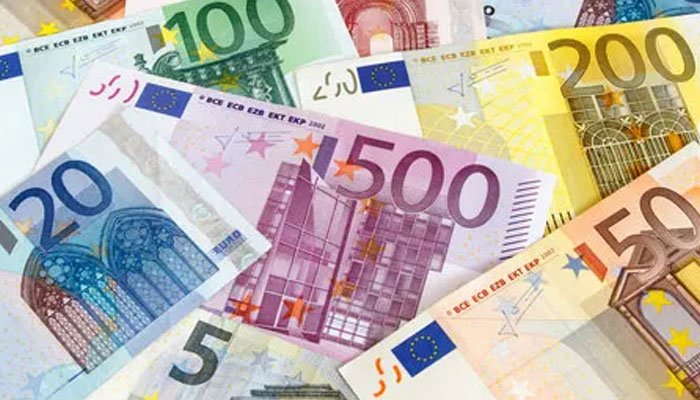European Nations Ranked by Minimum Wage Level. Millions of workers throughout the European Union still rely on minimum wage earnings. These wage floors are meant to ensure a basic standard of living, but they often fail to keep pace with rising inflation.
As of July 2025, Eurostat data shows that minimum wages across the EU vary widely—from €551 per month in Bulgaria to €2,704 in Luxembourg, before taxes and deductions.
Among countries seeking EU membership, Ukraine has the lowest minimum wage, standing at only €164 per month.
Interestingly, five EU nations—Italy, Denmark, Sweden, Austria, and Finland—do not set a national minimum wage at all.

While Luxembourg offers the highest minimum wage and Ukraine the lowest, a clearer comparison emerges when these figures are adjusted for purchasing power. This helps highlight how minimum wage levels truly stack up across Europe, reflecting what workers can actually afford in each country.
Minimum wages in Europe
As the chart below shows, there are significant differences in minimum wages across Europe, and Eurostat groups countries into three wage levels.
Euronews has added a fourth category which groups nations with minimum wages under €600 and includes EU candidate countries.
1- Highest Group: Above €1,500
Except for France, which offers €1,802, all other countries in the highest group pay over €2,000 in monthly minimum wage. Besides, Luxembourg, these include Ireland (€2,282), the Netherlands (€2,246), Germany (€2,161), and Belgium (€2,112).
2- Mid group: Between €1,000 and €1,500.

This group includes Spain (€1,381), Slovenia (€1,278), Poland (€1,100), Lithuania (€1,038), Greece (€1,027), Portugal (€1,015), and Cyprus (€1,000). Several countries in the mid group are just above the €1,000 threshold. Several countries in the mid group are just above the €1,000 threshold.
3- Low group: Between €600 and €999
Croatia (€970), Malta (€961), Estonia (€886), Czechia (€841), Slovakia (€816), Romania (€797), Latvia (€740), Hungary (€727), Montenegro (€670) and Serbia (€618) belong to the low group of minimum wage countries in Europe, with wages falling between €600 and €999.
4-Very low group: Below €600
Several countries, including one EU member, have minimum wages below €600. This lowest group is mostly made up of EU candidate countries. It includes North Macedonia (€584), Turkey (€558), Bulgaria (€551), Albania (€408), Moldova (€285), and Ukraine (€164).
Minimum wages reflect East–West divide
As the map below shows, there is a strong geographical divide in nominal minimum wages across Europe. This is most notably between Western and Eastern Europe. In general, the four wage groups reflect different regions of the EU.
Countries in the highest group are mainly in Western and Northern Europe. The mid group includes several countries from Southern and Central Europe. The low and very low groups consist mostly of Eastern European, Balkan, and EU candidate countries.
Role of higher productivity on wages
Dr. Sotiria Theodoropoulou of the European Trade Union Institute (ETUI) explains that greater productivity often leads to sustainably higher wages and salaries overall. Countries with strong industrial or financial sectors tend to be more productive, and high-tech industries typically contribute significantly to this. Additionally, when workers have stronger bargaining power, it also supports higher wage levels.
Minimum wages changes over the past 6 and 12 months
Over the last six months, from January to July 2025, the minimum wage remained unchanged in most EU and candidate countries. In euro terms, North Macedonia recorded the highest increase at 7.7%, followed by Greece with 6.1%. Turkey saw the largest drop, with a 21.2% decline, followed by a 9.9% fall in Ukraine.
In candidate countries, changes in exchange rates played a major role. For example, in Turkey, the minimum wage stayed the same in Turkish lira during this period. However, minimum wage earners have been hit hardest by the highest inflation rate in Europe.
Between July 2024 and July 2025, Montenegro and North Macedonia recorded the highest increases in minimum wages, both above 20%. In contrast, Ukraine and Turkey experienced the largest declines.
Among eurozone countries, Croatia saw the biggest rise at 15.5%, followed by Lithuania with 12.3%.
In France, the increase was modest at just 2%. Spain and Germany recorded slightly higher gains, with 4.4% and 5.2% respectively. However, when inflation is taken into account, the real value of these increases is likely much smaller.
The UK National Minimum Wage increased by 6.7% from April 2025.
Minimum wage rankings shift with purchasing power
When comparing minimum wages across countries, purchasing power parity (PPP) is important because the cost of living varies widely.
PPS provides a better comparison by using an artificial currency that reflects what people can actually buy in each country. According to Eurostat, a PPS is an artificial currency unit that, in theory, buys the same amount of goods and services in each country.
When adjusted for purchasing power parity, the wage gap between countries narrows significantly. For example, in Luxembourg, the minimum wage is 4.9 times that of Bulgaria – both the highest and the lowest in the EU.
In PPS terms, this gap narrows to 2.3 times. While Luxembourg (2,035) still tops the list, Estonia (886) has the lowest PPS minimum wage. When EU candidate countries are included, Albania is at the bottom with a PPS of 566.
At the top, Germany, the Netherlands, and Belgium follow Luxembourg. Ireland and France follow.
Although Eastern and Balkan countries often rank low in terms of the euro, they perform much better in terms of PPS. Western European countries still have an advantage, but their advantage is smaller.
For example, seven EU member states North Macedonia, Turkey, and Montenegro are at the bottom in terms of PPS. These include Malta, Hungary, Slovakia, the Czech Republic, Bulgaria, Latvia, and Estonia.
In addition to Turkey and North Macedonia, Romania also ranks significantly higher in PPS. Montenegro and Bulgaria also hold relatively strong positions.
Estonia and Czechia are the two countries that lost the most ground in the PPS rankings compared to their positions in terms of the euro.








